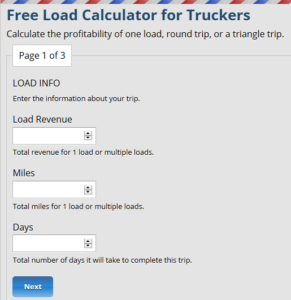LTL shipping, or less-than-truckload shipping, is in high demand in the trucking industry. When companies need to ship product but it’s not a full load, the LTL trucker comes to the rescue. While this is a way for a trucker to take multiple loads at one time to full their trailer, it can become complicated. Without a clear plan to manage the loads and the delivery windows, owner-operators can take a loss instead of maximizing a trip. With TruckingOffice PRO load planning board, many of those issues can be resolved even before the freight is loaded.
A Small LTL Freight Explanation
Yeah, the pun is intended. Small loads that exceed the FedEx or UPS limits still need to be shipped. LTL freight truckers combine multiple small loads to make the most profit from a trip.
For example, trucker Raj has a lead on a load that won’t fill his trailer. He’s heading to Texas. He knows how much space and weight capacity he has, so he looks for another load or even many loads that will fill up the trailer. He can bill each one and make the trip far more profitable than just taking the single smaller load.
Often this type of shipping is handled by a hub-and-spoke trucking firm. The load is picked up and brought to a terminal where it’s combined with other shipments going in the same direction. That means the driver who picked up the load won’t make the delivery to the receiver.
For some customers, that’s not what they want. They want the same trucker who picked up the load to deliver it. Maybe they think it’s safer or maybe they think it’s easier to track the load or to have more confidence that the freight will arrive on time.
Some shippers want specialty services that the LTL freight trucker can provide.
LTL Load Planning
LTL truckers use weight and space as the primary factors to determine the shipping rates. The shipper only pays for the space and weight that their freight occupies within the trailer, which makes LTL shipping a cost-effective solution for small to medium-sized businesses.
For the trucker, the key is to manage the freight pick ups, the organization inside the trailer, and the deliveries in the most cost effective way.
A shipper will have the dimensions and weight of the shipment as well as the pick up and delivery details, just like any load. It’s up to the trucker to organize their load and trip.
This is why TruckingOffice PRO has a load planner. When there are choices to be made, all truckers need a way to compare the potential of the loads. Using TruckingOffice PRO’s load planner, the trucker puts all the details into one screen so that the details can be seen and reorganized easily. Instead of index cards or complicated spreadsheets, the load planner keeps the important data so the trip planning – and billing – are manageable from your truck cab.
Billing LTL
Overall, scheduling LTL freight involves careful planning, communication with the carrier, and attention to detail to ensure that your shipment arrives safely and on time.
If you are a carrier looking for LTL shipping loads, there are several ways to find them:
- Load boards: Load boards are online marketplaces that connect carriers with shippers and brokers who need to move freight. There are many load board options, such as DAT, Truckstop.com, and 123Loadboard, that offer LTL loads as well as full truckload (FTL) and partial truckload (PTL) loads.
- Brokers: Freight brokers act as intermediaries between shippers and carriers, matching available capacity with freight shipments. Brokers often have access to a variety of LTL loads, and they can negotiate rates on your behalf. Some popular brokers include CH Robinson, Coyote Logistics, and TQL.
- Direct contact with shippers: You can also reach out to shippers directly to inquire about LTL shipping loads. This approach may require more effort to build relationships and establish a customer base, but it can also result in more consistent and profitable freight opportunities over time.
- Networking: Networking with other carriers, industry associations, and logistics events can also help you find LTL shipping loads. Building relationships and staying informed about industry trends and best practices can lead to new opportunities and partnerships.
Regardless of which method you choose, it’s important to carefully evaluate each load opportunity to ensure that it aligns with your capacity, equipment, and profitability goals.







Good information.